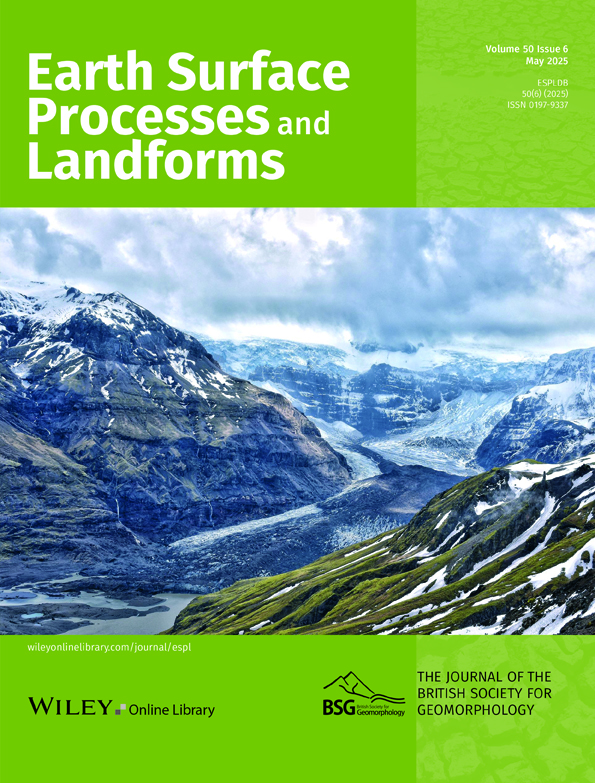Microtopography-scale research on the sediment connectivity of hillslopes based on optimised M&V depression-filling and a simulated annealing algorithm
Funding information:
Natural Science Foundation of China, Grant/Award Numbers: 42277326
National Key Research and Development Program of China, Grant/Award Numbers: 2022YFF1302902
Abstract
Sediment connectivity serves as a crucial indicator for assessing the extent of soil erosion, thus reflecting the potential sediment transport capacity within a given watershed. Depression filling is one of the most elementary operation procedures in the hydrologic analysis of surface microtopography. However, the influence of microtopography on sediment connectivity calculated by a high-efficiency algorithm at the hillslope scale remains uncertain. In this study, we developed an improved depression-filling algorithm based on digital elevation models (DEMs) to evaluate the sediment index of connectivity (IC) under different microtopographic treatments (surfaces with continuous depressions, alternating depressions, continuous mounds, alternating mounds, continuous mounds and depressions, and alternating mounds and depressions) during rainfall events. A smooth surface was used for the control treatment. The results indicated that the presence of microtopographic conditions and the type of algorithm significantly influenced sediment connectivity and yield. The mean IC values obtained from different algorithms notably differed. The combined M&V depression-filling–simulated annealing algorithms (M&V–SAA) generated relatively few parallel flow directions, thereby promoting the creation of additional continuous sediment connectivity paths. The slope surface with alternating mounds significantly increased the sediment yield, whereas that with alternating mounds and depressions markedly decreased the sediment yield at a rainfall intensity of 60 mm h−1. The IC value calculated via the M&V–SAA algorithm was significantly positively correlated with the sediment yield, whereas the IC values calculated via the other algorithms were not significantly correlated with the sediment yield. A simulated annealing mechanism was integrated into the M&V algorithm, thereby increasing the accuracy of the calculated IC values at the microtopographic scale. These findings could critically inform the optimisation of sediment connectivity models and provide a precise quantitative description of sediment transport during rainfall events.
CONFLICT OF INTEREST STATEMENT
No potential conflicts of interest were reported by the authors.
Open Research
DATA AVAILABILITY STATEMENT
The data will be made available upon request.




